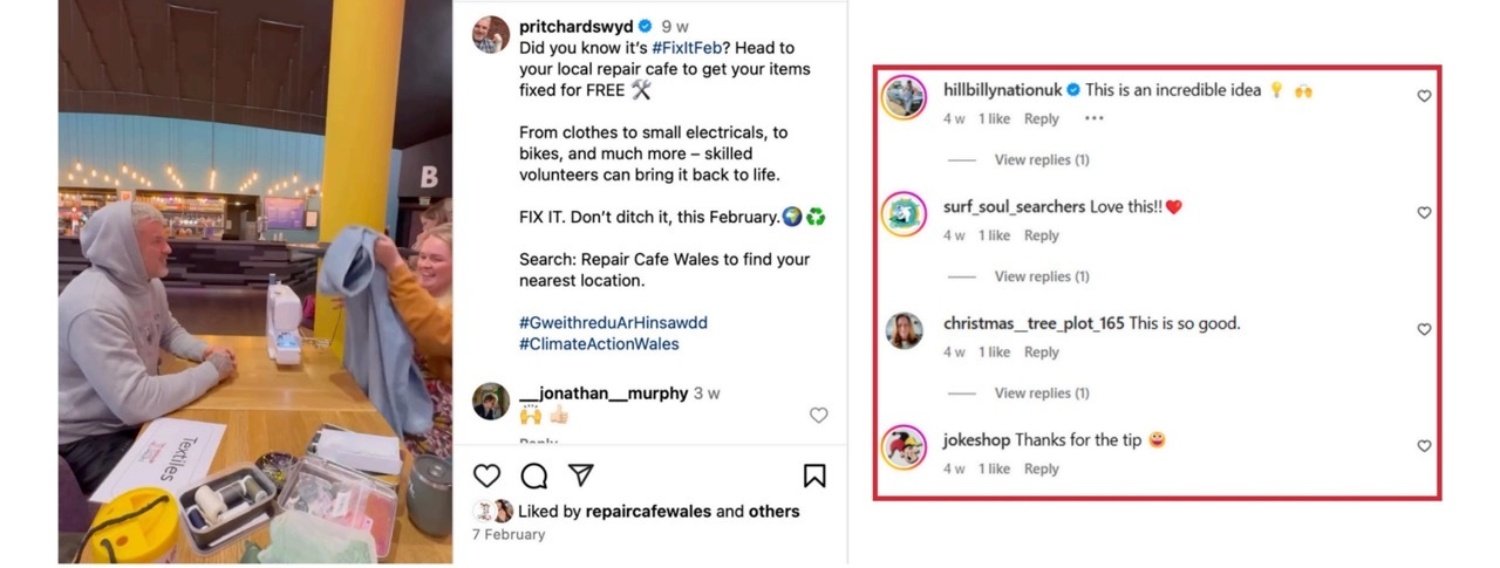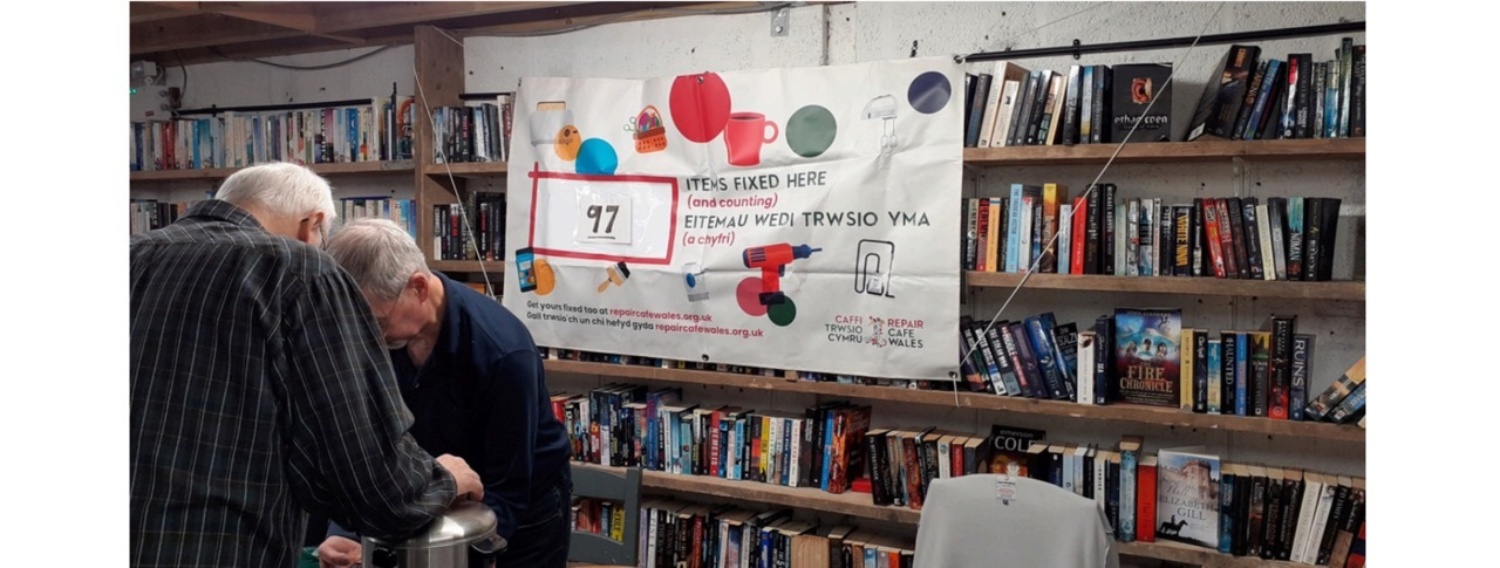Background
Repair cafes are community-driven spaces where people bring their broken items to be fixed by skilled volunteers, offering a sustainable alternative to throwing things away and buying new. With Repair Cafe Wales, we designed and tested four interventions to help shift perceptions, normalise repair, and accelerate use of repair cafes across Wales. The interventions reached thousands, revealed what motivates people to repair, and laid the groundwork for scaling behaviourally led interventions across Wales.
Insight
A deep dive into repair data and evidence helped us to understand current repair behaviours and barriers. Lack of awareness of repair cafes was clear, with many people simply not knowing they exist. Among those who do, willingness to try them is low. We identified two key behavioural barriers:
- The ease of buying new: In today’s world, the time and effort required to take your broken item to a repair cafe is outweighed by the convenience of replacing an item with just one click.
- Doubts over quality of repairs: As cafes are often staffed by volunteers, many question the quality of repairs and are concerned whether the repaired item will be up to the standard of a replacement.
Learning from those who do repair, we found motivations varied across audiences. For families and young people, cost saving was the primary motivator, particularly for large appliances or electronics that are expensive to replace.
Beyond financial motivations, repair cafes offer something unique: the opportunity to connect with others and learn new skills. We suspected that if this communal aspect were lost, people might be less inclined to engage with this repair model.
Intervention
Increasing engagement with repair cafes would require more than just raising awareness - we needed to address the underlying barriers of convenience and quality, whilst also tapping into the motivations that drive people to repair in the first place. We designed our approach around three strategic levers to guide our interventions:
- Build the brand of repair - to increase trust and perceived value, countering doubts about the quality of repair
- Drive action through targeted comms - to prompt people at the right time and place, making repair feel easy and relevant
- Harness the power of community - to emphasise the benefits of repair cafes and what makes them unique
In a collaborative workshop, we generated ideas around these levers using behavioural principles, and made recommendations for interventions where we tested four of these in the next stage of the project.
Implementation
Our four interventions were designed to reach different audiences across digital and physical spaces.
Better than buying a new one
This intervention leveraged three core benefits of repair cafes: financial, community and environmental. Using paid and organic social channels, we delivered comms which framed these benefits in a way that felt personal and salient to those who have something to fix.

Love it? Let it live
This social media campaign aimed to tap into the emotional attachment people have with their sentimental items, and encourage them to repair them at a repair cafe. We worked with influencers to share real stories of getting their own sentimental items repaired at a cafe, and used fictional stories to showcase the possibilities of what repair can do.

...Or we could help with that
This campaign used Google ads to target key repair-related searches, redirecting people to their nearest repair cafe and highlighting the human support on offer. We targeted people who are interested in repair, but might feel intimidated or discouraged by online tutorials, and people looking to replace a broken item without knowing a free repair is just in reach.

[X] items fixed here (and counting)
Outside selected Repair Cafes, we installed banners that showed how many items had been repaired there, updating regularly to demonstrate local impact. The aim was to normalise repair and increase visibility of the cafe and impact they have on the community they’re in. It also got in front of members of the public who may not be online.

Impact
Our four interventions were rolled out over 6 months, each aiming to target different motivations and barriers to repair.
- Better than buying a new one: This campaign testing different benefits of visiting a repair cafe drove strong engagement across social media and our landing page, with financial messaging performing best, followed by environmental and community.
- Love it? Let it live: Our influencer and paid social campaign targeting sentimental items reached thousands of people across social media. Where data was available, we saw signs of increased footfall at targeted cafes.
- ...Or we could help with that: Google ads performed particularly well for vacuums and clothing repair, and our ads even outperformed Amazon in several key areas.
- [X] items fixed here (and counting!): Our physical banner campaign worked well at a practical level, raising visibility and receiving positive feedback. Though they had limited impact on visitor numbers.
Not every test delivered conclusive results, but all offered valuable insight into what drives repair behaviours. All of these interventions were first-time trials, grounded in behavioural insight, and together they lay strong foundations for scaling this work in future.